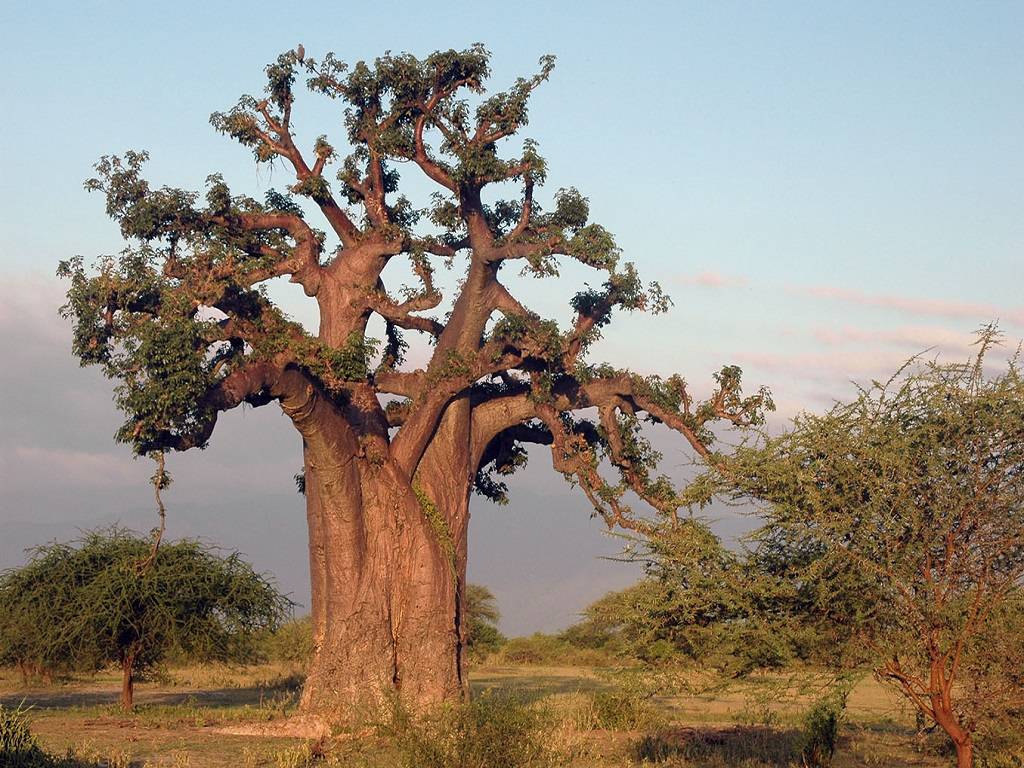
India has long been familiar with the baobab. Their entrance and dispersion into our nation from tropical Africa are attributed to Muslim traders. The baobab, an African native, is one of nature's most beautiful trees.
African Baobab, botanically known as Adansonia digitata belongs to Malvaceae. The tree only reaches a height of 70 feet, but its huge, bottle-shaped trunk is up to 35 feet in circumference. In reality, during dry seasons, water is kept in the trunk. People used to construct homes out of the hollow trunks of live trees. At the tips of short, stocky branches, the palmately complex leaves are grouped. As a deciduous tree, baobabs lose their leaves during the dry season.
According to an Arabian tradition, the devil uprooted the baobab, pushed its branches into the ground, and left its roots hanging in the air. This accurately captures the form of a baobab without leaves. The baobab blooms with enormous white flowers that dangle from long stalks after the dry season. The blooms are 4-5 inches around and have waxy, crinkled petals that are approximately 4 inches long. They are surrounded by thick clusters of what appear to be powder puff-shaped purplish stamens.
Medicinal Uses:
The leaves are antihistamine and hyposensitive. They are used to treat asthma, kidney and bladder disorders, generalised weariness, diarrhoea and bug bites. Infusions of leaves and flowers are useful for treating eye irritation, stomach issues, and respiratory issues. Diseases of the kidney, stomach, and joints are treated using seeds. They are roasted, ground, and either used topically to the diseased area or ingested as a liquid. For the treatment of gum and dental problems, seed paste is employed.
According to legend, the fruit's pulp, seeds, and bark are a remedy for Strophanthus poisoning. In Africa, the pulp is frequently used as a diaphoretic to cure diarrhoea and treat fevers. For cleaning wounds, the bark's gum is employed.
Propagation:
Seeds are planted in pots. At 21o C, germination typically takes place after 1-3 months and is 90–100 percent effective. If the seeds are first pricked or covered in boiling water or allowed to soak for 24 hours, germination will occur more quickly and successfully.
It is ideal to shade seedlings when they first appear for 8 days, then it needs partial shade for 4–7 days before placing them in full sun in pots.
Crop Care:
The best care begins with seed preparation; baobab seeds must be soaked at room temperature before planting. The seed coat is scraped to reveal the inner covering for enhanced germination after these seeds are immersed in water overnight. When planting, it's important to keep the soil temperature above 15°C. Keep the soil moistened but not wet. Baobab may be planted either outdoors or in containers as the roots develop. minimum pot diameter of 7 cm. It takes a week to a month for baobab seedlings to sprout. Baobab seedlings require endurance.
Maintenance Tips:
Baobabs only require moderate to minimal irrigation. The hardy exotic plant does well in a warm, sunny, and bright environment. The bigger specimens can endure prolonged drying durations.
On the other hand, seedlings require more water and should be kept moist, but not drenched. It can be kept indoors where it will be warm and bright throughout the winter, ideally close to a windowsill. Try to keep the temperature at 10o Celsius since baobabs cannot survive at lower temperatures.
The plant should not be fertilized or watered throughout the winter since doing so would harm it. If you are successful in growing a baobab tree, you will be rewarded with not only its aesthetically pleasing sturdy trunk and rich green foliage but also its enormous white blooms and delectable fruits.
Edible Portions:
Various edible parts are there including, roots, leaves, fruit, seeds, bark, sprouts, flowers, and vegetable. The fruit's pulp is consumed and turned into beverages. Completely mature fruit has a delicious white, powdery, dry pulp that is highly high in vitamins C and B2 and produces a tasty beverage. Additionally, the fruits are roasted and used as a replacement for coffee.











